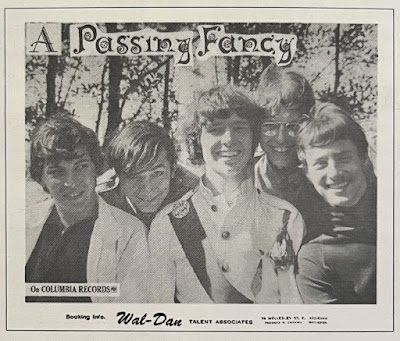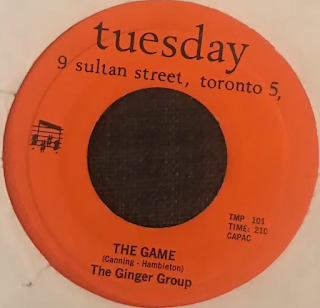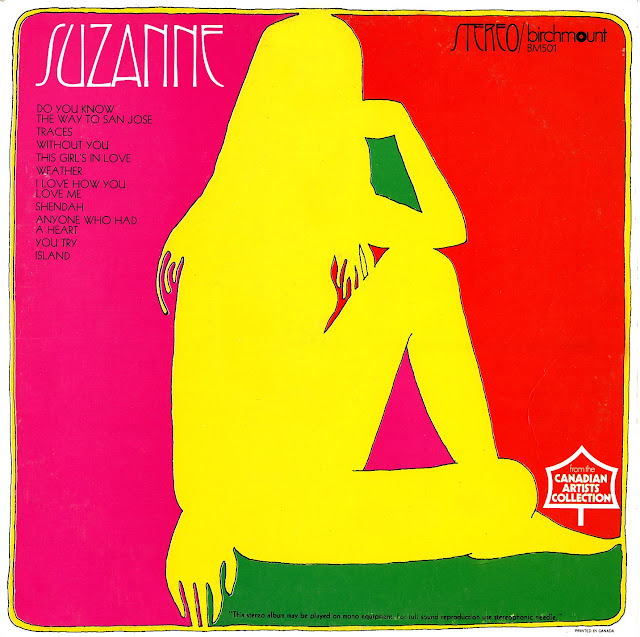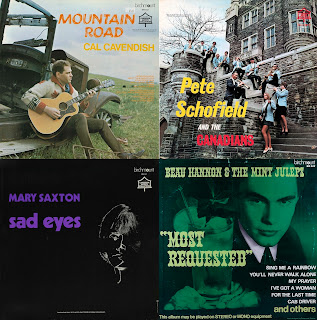Throughout the 20th century, Canada has seen no shortage of fantastic singer-songwriters. It's vast, beautiful landscape and deep history of folk and country music have lent themselves heavily to young songwriters over the decades. A handful have become nationally or internationally recognized and respected, but many have been obscured by the passage of time. Obscurity's a cruel fate to befall any artist, especially for those with a story to tell. Today's spotlighted artist is Toronto singer-songwriter Carol Lipson. Her lone commercial release, "Carol," is a wholly original outing put together in her late teens. Though not a commercial success upon release, "Carol" represents a high watermark of quality on the Audat label as well as a great example of original female folk/psych in general. Here is her story:
Carol Debra Lipszyc was born in Toronto on August 28th, 1955. Both her parents were adolescent Holocaust survivors of Poland and Belarus who settled in Toronto during 1952. During her youth, Carol attended McMurrich Public School. She didn't come from a musical family but found her love of singing early on, listening to various show tunes. It wasn't long before she was singing in youth choirs, both in English and Hebrew. Carol also began studying piano around the age of eight.The Lipszyc family moved to a house on Bathurst St. around the fall of 1965. Carol then attended Dufferin Heights Junior High. While studying at the school, she began singing solo in front of a group. Between the ages of ten and thirteen, she sang acapella at luncheon celebrations (bar-mitzvahs).
Carol's professional singing start came at the ripe young age of thirteen, when she made her debut on CBC Radio. The show in question was the Bruce Marsh hosted "What's New," which she performed on for a few weeks. This netted her a guest role at fifteen on another CBC Radio show, "9:15 Alarm Clock." This show (produced by Eithne Black) featured Alan Thicke, Brent Titcomb, Maribeth Solomon, Mickey Erbe, Brian Russell, and Brenda Gordon [Russell], among others. "They produced it in the old CBC building on Jarvis," says Carol. I became a regular and would sometimes skip class to do the show." She also appeared a number of times as a guest vocalist alongside Juliette and Alex Trebek, who co-hosted a CBC radio show at the Colonnade Theatre; the show was called “The Afternoon Show.”
"9:15 Alarm Clock" was an important learning experience for Carol as the youngest amongst the cast. She found mentorship amongst the cast as well, which really helped for comfortability as a singer and musician. "On the show, I looked up to Maribeth Solomon in particular," says Carol. "She was about seven years older than me; she wrote songs and played piano and flute." The Alarm Clock show also represented a shift in Carol's musical approach, moving from show tunes toward pop music.Throughout the early 1970's, Carol continued to develop as a singer but also began devoting more time to the piano and songwriting. By early 1973, Carol’s talents were undeniable. She caught the attention of Audat Records. An old friend and gigmate of hers, Vern Kennedy had co-founded the label with Bob Stone and was acting as the A&R man. He insisted that she should record an album of her original songs. With little convincing, Carol was on her way to Halifax with Vern to record at famed Audio Atlantic Studios. This was the place where many “Boot Records” were recorded, as well as most music on the Audat label.
Audat was an Oshawa-based Country & Folk label with a focus on the Maritimes. This was an extension of label owner Bob Stone's previous label concepts, Stone and Now Records. Though the main focus was on country, folk, and fiddle music, Audat did manage to release quite a few compelling rock/psych/funk projects during its day, mostly Maritimes acts, with many of these releases fetching three-figure sums today due to their rarity and quality: bands like Borealis, Gord Tracey & The Constellations, Brothers & One, The Neighbors Kids, Wes Mackey & The Brotherhood, etc.
Carol was set up with top studio players by Audat Records, including Eric Robertson on keyboards. Vern Kennedy handled the arrangements for all of her songs, and Al Feeney handled the mix. The album represents a very talented young lady with a lot to say. All songs were written by the then seventeen-year-old Carol Lipson. The songs convey a (mostly) sunny, orchestrated, acoustic-pop vibe, with vocals comparable to Joni Mitchell or Beverly Copeland. One of the gems of the album is “Ballad Of The Old Man.” The song is lyrically and musically a standout, creating a longing, nostalgic mood and painting a bittersweet story of growing old alone.Excitement around the release of Carol’s debut was growing. There was genuine faith in the songs and their ability to reach a larger audience. In an attempt at cross-pollination, Audat had label mates Johnny Cowell and The Oak Island Treasury Department record a pair of her songs. Johnny covered "Pickin Plums" on his 1973 album "Hot Brass," and Oak Island covered "Bring It Down" on their 1973 self-titled album.
But unfortunately, it was not to be. Other than pockets in Halifax and Toronto, the album really didn’t perform well due to a lack of meaningful promotion. This left Carol in a tough spot. But one thing she was known for and would become more known for in her later years was perseverance.
After Carol's debut album failed to find any meaningful success, she'd continue on as a songwriter and performer. She appeared on countless television and radio shows (with hosts like June Callwood, Martin Short, and Peter Gzowski); she did stints in Toronto piano bars; sang and played with many local and visiting jazz luminaries (including the late Paul Grosney, which opened her mind and ears to a deeper level of music study); and generally just tried her hand at breaking into the business in whichever manner she saw fit. Her time playing in piano bars and with jazz musicians was integral to her growth as a musician and songwriter. It highlighted for her the importance of melody line, especially in relation to starker arrangements. “You were compelled to sing well-constructed songs where possible,” says Carol.You were compelled to sing well-constructed songs where possible, says Carol.Carol embarked upon a journey to re-educate herself, acquiring Masters and Doctoral degrees in Education at OISE, University of Toronto, while teaching diverse student populations and often integrating music as a teacher. A literacy/ESl Reader, “People Express” (published by Oxford University Press in the late 1990's), included her self-penned chants and songs as a teaching strategy to help new immigrants with little education.
Her children’s CD, If You Try and Imagine, orchestrated and engineered by Donald Quan, was conceived of during her teaching certification training in St. Catharines; she believed in the power of integrating curriculum with songs and chants to address multiple intelligences.Eventually armed with her doctorate in education, Carol found a tenure-track position at an upstate SUNY College where she taught English teacher education and creative writing until retirement. During that fruitful and fulfilling period, she published across genres, including a book of lyrical poetry, Singing Me Home (Inanna 2010); a book of short stories on children in the Holocaust, The Saviour Shoes and Other Stories (Inanna, 2014); an anthology of poems on the heart, The Heart is Improvisational (Guernica, 2017); and a chapbook, In the Absence of Sons (Kelsay Books, 2020), as well as arts-based educational articles in international journals.
Carol represents a woman of true courage and tenacity. She's a person who believed in her art and her ability as a songwriter. Whenever Carol was beaten down by the industry, she got back up and fought harder. After her journey of re-education in the 1990's, she attacked the arts world with a new purpose: teaching others, especially children. She’s a multi-talented, warm-hearted person who deserves further recognition for her works. I especially think her 1973 album deserved further inspection. It represents a very talented young lady on the cusp of her creative breakthrough, whose voice is equally at home with the likes of Joni Mitchell and Beverly Copeland.






























